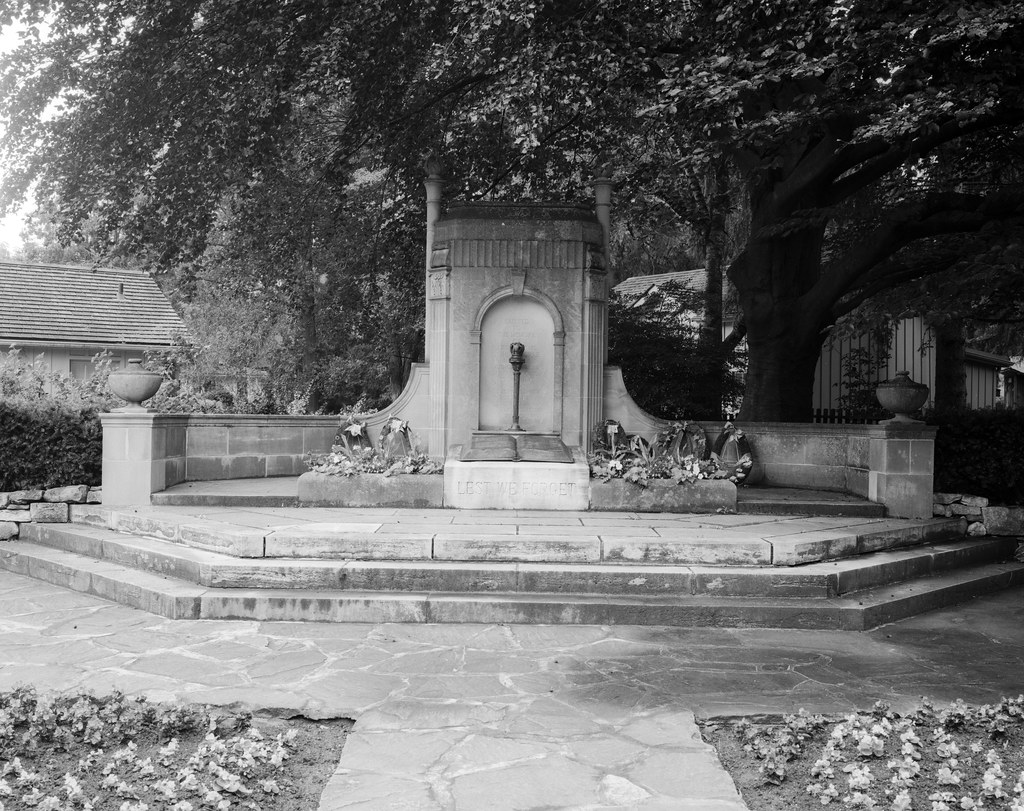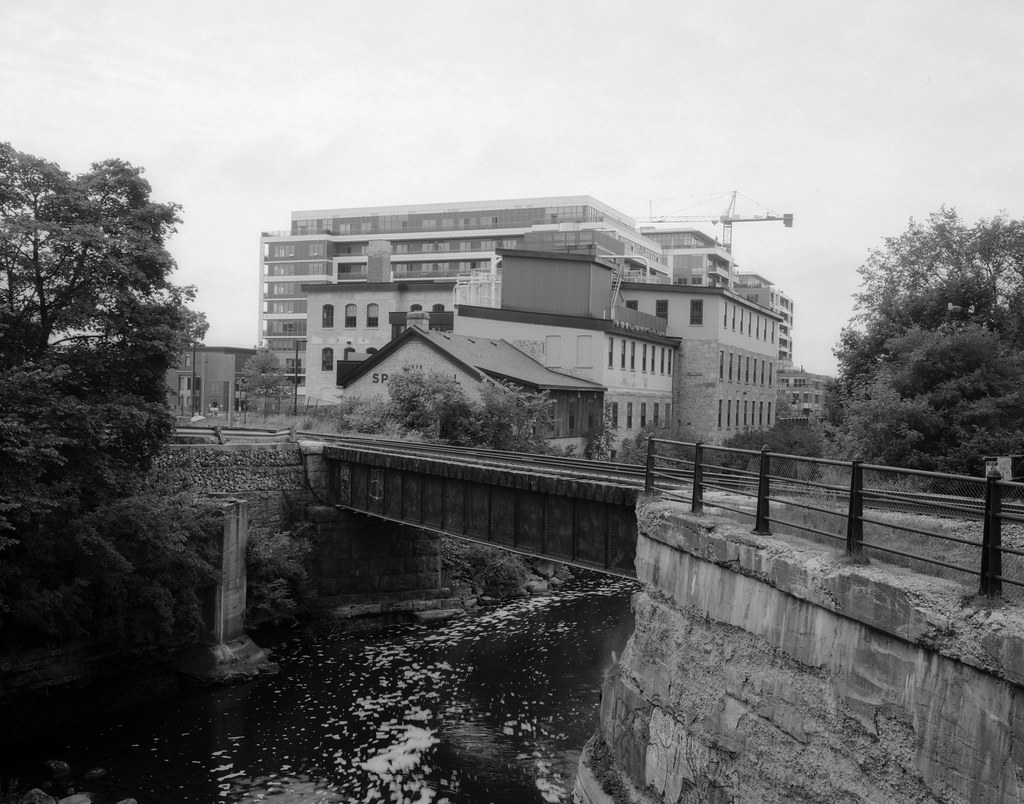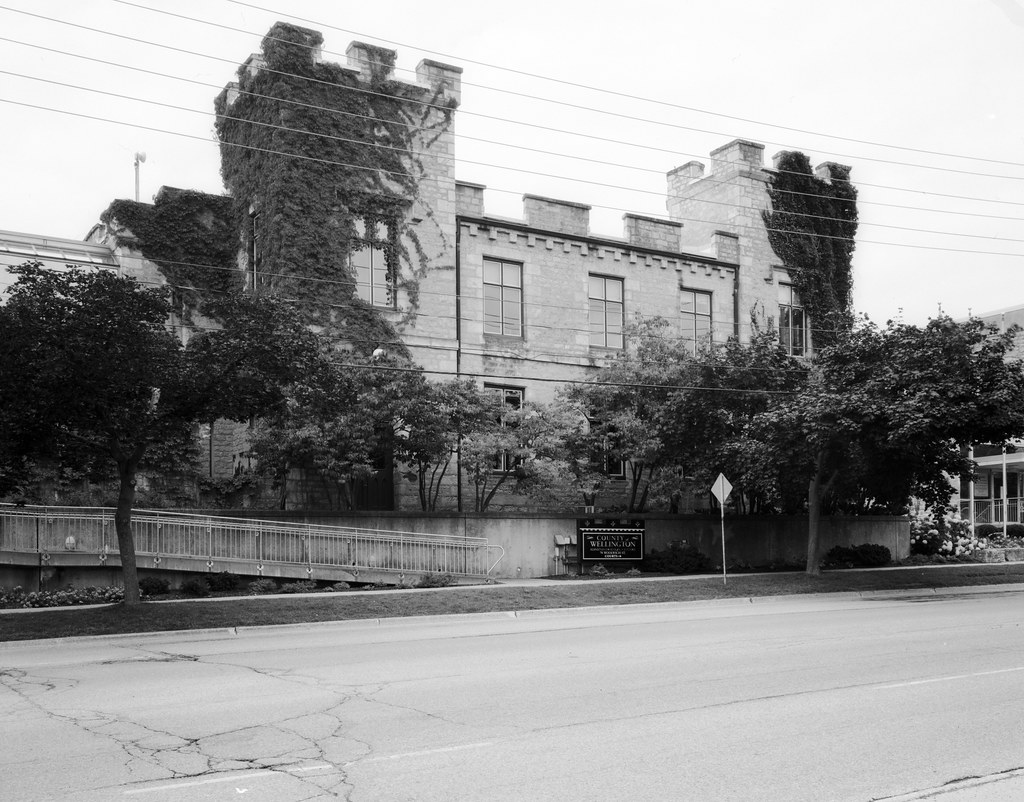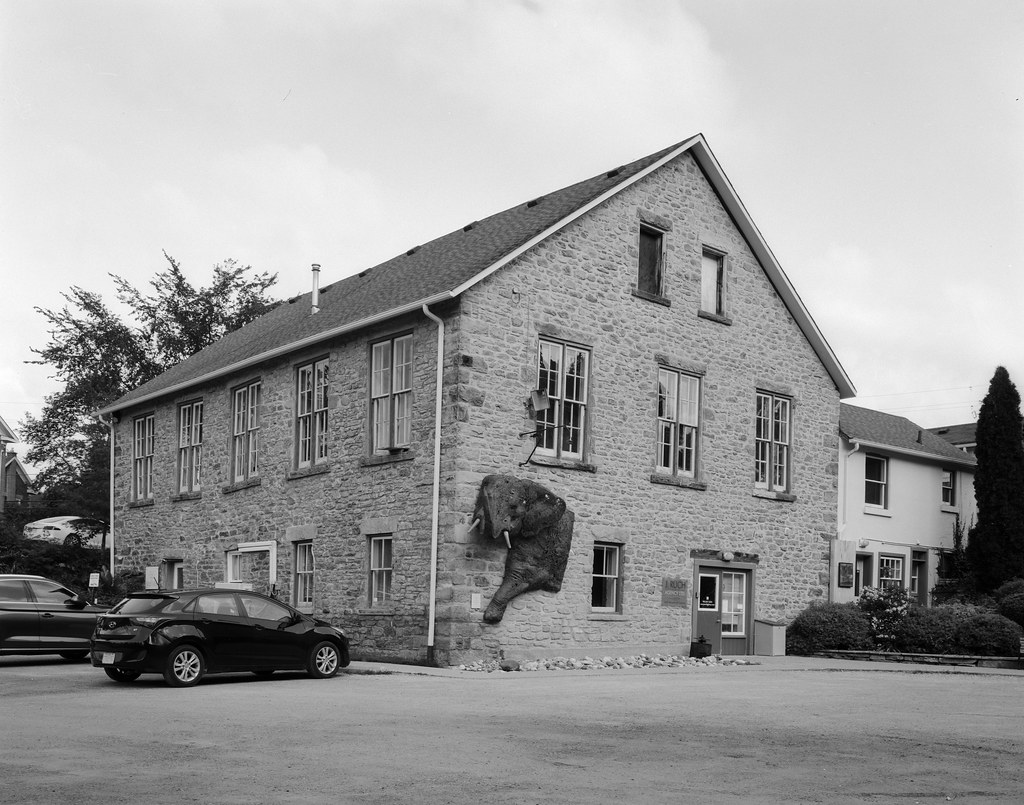Regarding CatLABS, you never know what they will pull out of the bag next. Earlier this year, I reviewed their latest version of the XFilm 320 Pro and was presently surprised with the results. While I never touched the original version (which is said to be Eastman Double-X), I did try their original version of XFilm 80. I loved the stuff in my original review and revisiting it at ASA-32. When I got my hands on the new 320 stuff, I grabbed a box of XFilm 80 II. And I’ve been sitting on it for a while, but during the hot days of summer finally took out my Crown Graphic and got to work. And you know, reviewing a film that comes in only sheet formats is both complicated and easy at the same time. Easy because I only have to shoot four frames, and hard because I only have four. Because of that, I only went with the listed development times instead of exploring the main body of this review. And you know, it’s incredible what you can accomplish when you focus on doing the best possible job for each frame, and you will be rewarded. And while I know this is a different stock from the original, I’m rather happy with these results.
Film Specs
Type: Panchromatic B&W
Film Base: Acetate
Film Speed: ASA-80, Latitude: ASA-80 to ASA-800
Formats Available: Sheet (4×5)
Original Film Stock: Fomapan 100
Group 01 – Kodak D-76
Coming in strong from the start, I looked at examples online before deciding how to develop this film. From my experience with XFilm 80, it is a low-contrast film stock. So I wanted to give it the best chance to wow me. And I was satisfied. I initially thought to use a 1+1 dilution, but I’m glad I went with a stock dilution. And I ended up with four beautiful negatives. In all four examples, I metered for the darkest shadows in which I wanted the most detail and then under-exposed by a stop. And while I did lose some of the strongest highlights and shadows, I got terrific detail across the board. The contrast was a fantastic medium look with excellent tonality across the board. This tonality is complimented with fine-grain and excellent edge sharpness, which makes for a wonderfully sharp image. It also scanned rather well, and I only had to complete some post-processing was needed.




Group 02 – Ilford Ilfotec HC
Going with my gut, I did not use my standard dilution of 1+63; I went instead with the listed time for a 1+31 dilution. Like the previous set, I mostly went with a meter for the shadows and was under-exposed by a stop for all but two of these images (Spring Mills and the Façade) as there was a wider range between the shadows and highlights. Again I was rewarded with superb image results. There is more contrast than my previous set with D-76, but that doesn’t surprise me. I also saw a bit more visible grain. However, when you combine these two, you again get excellent sharp images and stunning latitude. I see the same loss in the deepest shadows and brightest highlights as with D-76.




Group 03 – Adox Rodinal
These results blew me away. They are everything I had hoped for, although I was slightly concerned with a short development time and a 1+50 dilution on Rodinal. However, there are no recommended 1+25 times for the speed of ASA-80. The contrast is impressive, good blacks, excellent whites and a lovely scale. This is further enhanced by an increase in edge sharpness, which should not be surprising. There is a trade-off with an uptick in visible grain. But with such a big negative, you don’t notice it too much; this would undoubtedly be the way to go if you intended to print these in a traditional darkroom.




Group 04 – Kodak TMax Developer
This set is not my favourite, they are alright, but I expected better from the TMax Developer. Now I don’t wholly blame the developer in this case; the lighting during the day was high-contrast and climbing in the sky and provided some exciting conditions, most of them high-contrast that any film would have trouble handling. Under lower-contrast conditions and a different method of metering, it would do rather well. The visible grain is still there, but not as visible as it is with Rodinal, and there is a more compressed tonal range, but it isn’t too concerning; there is still great detail in the mid-tones. So you end up with sharp negatives, but in some cases, I completely lost the shadow detail or blew out the highlights. It might be best to use this developer in low-contrast conditions.




Final Thoughts
While CatLABS have been tight lipped on the source of this new film, I can say that when I pre-washed the film, the water came out with a vibrant turquois colour that I tend to see with Foma films. But when you look at the developing times, they aren’t close to what you might get with a Foma film, in all three versions. And that is even taking the listed film speed of ASA-80 into account. What is also interesting is that there are listed times up to ASA-800, which makes me thing this is natively an ASA-100 film the webpage clearly states that you don’t have to adjust times when exposing at ASA-100. There is some speculation that film is produced by ORWO In all four cases, the film has been fairly consistent in the results I’ve gotten with no single developer standing out as the best option. Personally, my favourite remains D-76 and Rodinal as they offered the best balance for tone, grain, and sharpness. While this isn’t a bad film, I won’t be using it again, there are less expensive options with a broader range of development times available that provide similar results. As a sheet film in 4×5 you’re looking at a cost of 1.40$ per sheet, and 8×10 4.76$ per sheet, which isn’t bad, but there are better options. But if you’re not ready to spring for Ilford or Kodak large format, but are ready for something other than Foma, then perhaps this is a good intermediate film to help hone your craft.
Further Reading
Don’t just take my word on X Film 80 Mk. II, you can check out the reviews by other awesome camera reviewers!
Freestyle Photographic – CatLABS X Film 80 II Review

I’ve used this before with Pyrocat HD and was pleased with the results. Hoping to try it with 510 Pyro next.
Hey Alex, another great and very useful review, thank you! I am interested in how you landed on the timing of development in Rodinal. Looks good at the 9 minutes you used here, and that’s what the folks at Catlabs recommend on the site, so I’m trying to square that with the 15 minutes suggested on Massive Dev Chart app? Maybe that was based on an earlier version of the film, given that this is MKII? Just wondering, as I will be getting a couple of boxes of 4×5 sheets next week, and will be developing my first shots sometime in the coming weeks…
Thanks! Yes the 9 minutes is from CatLabs directly, as it is the listed time for Fomapan 100, which Mk.2 is under the hood.
Hi Alex, I just read your testing article on CatLabs X film iso 80, which I thought was excellent.
I have been using for years Delta 100 and TMax 100 sheet films which are getting very expensive. I would like to try the CatLabs X film you wrote about in your blog because of the less expensive costs, but would like to talk to you in person via phone if it is possible. I have been a large format photography for over 50 years, working exclusively in the wet darkroom, both processing film with the Jobo processor and making my own silver gelatin prints. I am CatLabs film curious and wish to briefly speak to you over the phone if possible. I live in the Chicago area, but out in the country. If you give me a call I would greatly appreciate it and keep my questions brief.
1 815 994-0842
Good Afternoon! I will give you a call on Monday if that is acceptable?
Thank you for your review. Out of curiosity, what film did you think was better and why? Personally, I thought the negatives you made with this film look excellent, but I am always looking for new film to try.
Both the original X Film 80 and Mk II are excellent, although they are different film stocks. X Film 80 Mk. II is basically Fomapan 100, which is a nice classic emulsion that I’m a fan of!